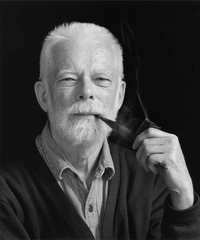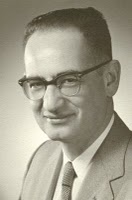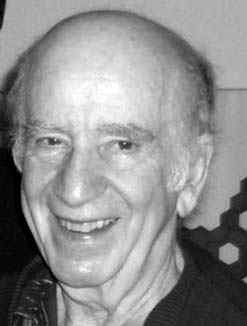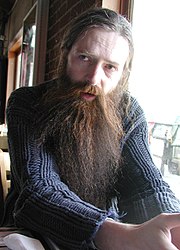Section 6.3 The Chromatic Number of the Plane
It doesn't matter how long my hair is or what colour my skin is or whether I'm a woman or a man. — John Lennon, English musician, singer and songwriter, 1940 - 1980
Problem. What is the smallest number of colours sufficient for colouring the plane in such a way that no two points of the same colour are unit distance apart? — Edward Nelson, 1950
Edward Nelson was born on May 4, 1932, in Decatur, Georgia. He is a professor in the Mathematics Department at Princeton University.

Definition 6.3.2.
Chromatic Number of the Plane. The smallest number of colours sufficient for colouring the plane in such a way that no two points of the same colour are unit distance apart is called the chromatic number of the plane and it is denoted by \(\chi\text{.}\)
Question 6.3.3.
Are two colours enough?
Proposition 6.3.5.
\(\chi \geq 3\text{.}\)
Question 6.3.6.
Are three colours enough?
Leo Moser was a professor of mathematics at the University of Alberta. William Moser a was a professor of Mathematics at the University of Saskatchewan, the University of Manitoba and McGill University.

Be generous and patient as teachers, be active in projects which benefit the mathematical community and, above all, have as long and as happy a mathematical life as I have had, and am still having. — W. Moser in 2003. (Source MacTutor.)

The Moser brothers' construction:
Start by choosing a point\(A\) in the plane and then draw a circle with the centre at \(A\) and radius \(1\text{.}\) Denote this circle by \(C_1\text{.}\) Next, choose a point \(B\) on the circle \(C_1\text{.}\) Draw the line segment \(\overline{AB}\text{.}\)
Draw a circle with the centre at \(B\) and radius \(1\text{.}\) Denote this circle by \(C_2\text{.}\) Let \(C\) be the intersection point of \(C_1\) and \(C_2\text{.}\) Draw a circle, call it \(C_3\text{,}\) with the centre at \(C\) and radius \(1\text{.}\) Observe that the point \(A\) belongs to both \(C_2\) and \(C_3\text{.}\) Let \(D\) be the the other intersection point of \(C_2\) and \(C_3\text{.}\) Draw the line segments \(\overline{AC}\text{,}\) \(\overline{BC}\text{,}\) \(\overline{BD}\text{,}\) and \(\overline{CD}\text{.}\) Observe that all those line segments are of length 1.
Draw a circle, call it \(C_4\text{,}\) with the centre at \(D\) and radius \(1\text{.}\) Draw a circle with the centre at \(A\) and passing through the point \(D\text{.}\) Denote this circle by \(C_5\) Next, choose a point \(E\) in the intersection of \(C_4\) and \(C_5\text{.}\) Draw the line segment \(\overline{DE}\text{.}\) Observe that \(|\overline{DE}|=1\text{.}\)
Draw a circle with the centre at \(E\) and radius \(1\text{.}\) Denote this circle by \(C_6\text{.}\) Let \(F\) and \(G\) be the intersection point of \(C_1\) and \(C_6\text{.}\)
Draw the line segments \(\overline{AF}\text{,}\) \(\overline{AG}\text{,}\) \(\overline{EF}\text{,}\) and \(\overline{EG}\text{.}\) Observe that all those line segments are of length 1.
The Moser Spindle
Reminder: Question. Are three colours enough?
Proposition 6.3.16.
\(\chi \geq 4\text{.}\)
Question. Are three colours enough? (Again.)
Hugo Hadwiger in 1961: Consider a three colouring of the plane: \(c:\Pi\to\{\color{blue}{\bullet}, \color{green}{\bullet}, \color{red}{\bullet}\}\text{.}\)
Hugo Hadwiger used the following construction to show that there must be two points, say, \(X\) and \(Y\text{,}\) such that
Start by choosing a point \(A\) in the plane and then draw a circle with the centre at \(A\) and radius \(1\text{.}\) Denote this circle by \(C_1\text{.}\) Suppose that \(c(A)=\color{green}{\bullet}\text{.}\) If there is a green point on the circle \(C_1\text{,}\) then we have two points coloured by the same colour that are one unit apart. Suppose that all points on the circle \(C_1\) are coloured either blue or red. Next, choose a point \(B\) on the circle \(C_1\) and suppose that \(c(B)=\color{red}{\bullet}\text{.}\) There are two points on \(C_1\) that are one unit apart from \(B\text{.}\) (Why?) If one of them is red, we are done. Suppose that both of them are blue and pick one of them. Call it \(C\text{.}\)
Draw a circle with the centre at $A$ and radius \(\sqrt{3}\text{.}\) Denote this circle by \(C_2\text{.}\) Let \(D\) be the intersection point of the circle \(C_2\) and the line of symmetry of the line segment \(\overline{BC}\) that is not on the same side of the line \(BC\) as the point \(A\text{.}\) Observe that \(|\overline{BD}|=|\overline{CD}|=1\text{.}\) (Why?) If the point \(D\) is coloured red or blue then we have two points that are one unit apart and of the same colour. Suppose that \(c(D)=\color{green}{\bullet}\text{.}\)
Let \(E\) be a point on the circle \(C_2\) such that \(|\overline{DE}|=1\text{.}\) Draw a circle with the centre at \(E\) and radius \(1\text{.}\) Denote this circle by \(C_3\text{.}\) Observe that \(C_3\) intersects the circle \(C_1\) at two points, \(F\) and \(G\) and that \(|\overline{FG}|=1\text{.}\) (Why?) Recall our assumption that all points on the circle \(C_1\) are coloured or blue or red. Colour \(E\) by any of the three colours. What happens?
Therefore… \(\chi \geq 4\text{.}\)
Question. Are three colours enough? (Again.)
Golomb Graph. By Solomon Golomb (1965).
Draw a circle with the centre at \(A\) and radius \(1\text{.}\) Denote this circle by \(C_1\text{.}\) Let \(BCDEFG\) be a regular hexagon inscribed in the circle \(C_1\text{.}\)
Draw a circle with the centre at \(A\) and radius \(\frac{\sqrt{3}}{3}\text{.}\) Denote this circle by \(C_2\text{.}\) Draw a circle with the centre at \(C\) and radius \(1\text{.}\) Let \(H\) be an intersection point of \(C_2\) and \(C_3\text{.}\) Observe that \(|\overline{CH}|= 1\text{.}\)
Let \(\triangle HIJ\) be an equilateral triangle inscribed in \(C_2\text{.}\) Observe that, since the radius of \(C_2\) equals to \(\frac{\sqrt{3}}{3}\text{,}\) \(|\overline{HI}|= |\overline{HJ}|=|\overline{IJ}|=1\text{.}\)
Let \(r\) be the clockwise rotation by\(\frac{2\pi}{3}\) with the centre at \(A\text{.}\) Then \(r(C)=G\) and \(r(H)=J\text{.}\) Since \(r\) is an isometry it follows that \(|\overline{GJ}|=|\overline{CH}|=1\text{.}\) Similarly, \(|\overline{EI}|= |\overline{CH}|=1\text{.}\)
The Golomb Graph.
Are three colours enough?
Toss the Golomb graph on the red/blue/green coloured plane. Recall that every edge in the Golomb graph is of length 1.
Suppose that the point \(A\) is coloured red and that each triangle that has \(A\) as a vertex is a rainbow triangle.
If \(H\) is coloured green, then there are two points, \(C\) and \(H\text{,}\) at the unit distance coloured by the same colour. Suppose that the point \(H\) is coloured blue. What are our options for colouring \(I\) and \(J\text{?}\) What if we assume that the point \(H\) is coloured red?
Therefore… \(\chi \geq 4\text{.}\)
What About Upper Bounds?
Consider the grid in which the length of the side of each square in the grid equals \(\frac{0.9}{\sqrt{2}}\text{.}\) Observe that the length of the diagonal of each grid cell is \(d=0.9\text{.}\)
A 9-colouring in which all neighbours of each square are of different colours. Is it possible to find two points of the same colour that are one unit apart?
Theorem 6.3.29.
\(\chi \leq 7\text{.}\) (Hadwiger, 1961)
A 7-colouring of a tessellation of the plane by regular hexagons, with diameter slightly less than one. Observe that each hexagon is surrounded by hexagons of a different colour.
Proposition 6.3.31.
\(\chi \leq 7\text{.}\) (Szekely, 1983)
7-colouring by László Székely: Start with a row of squares of diagonal 1, with cyclically alternating colours from 0 to 6 of the squares. Obtain the consecutive rows of coloured squares by shifting the previous row by 2.5 squares. Upper and right boundaries are included in each square, except for the upper left and lower right corner.
Closer look: Upper and right boundaries are included in each square, except for the upper left and lower right corner.
Theorem 6.3.34.
\(\chi \geq 5\text{.}\) (de Grey, 2018)
“In seeking graphs that can serve as \(M\) in our construction, we focus on graphs that contain a high density of Moser spindles. The motivation for exploring such graphs is that a spindle contains two pairs of vertices distance \(\sqrt{3}\) apart, and these pairs cannot both be monochromatic. Intuitively, therefore, a graph containing a high density of interlocking spindles might be constrained to have its monochromatic \(\sqrt{3}\)-apart vertex pairs distributed rather uniformly (in some sense) in any \(4\)-colouring. Since such graphs typically also contain regular hexagons of side- length 1, one might be optimistic that they could contain some such hexagon that does not contain a monochromatic triple in any 4-colouring of the overall graph, since such a triple is always an equilateral triangle of edge \(\sqrt{3}\) and thus constitutes a locally high density, i.e. a departure from the aforementioned uniformity, of monochromatic \(\sqrt{3}\)-apart vertex pairs.” — de Grey, Aubrey D.N.J. (2018), “The Chromatic Number of the Plane Is at least 5”, Geombinatorics, 28: 5–18, arXiv:1804.02385.

One of de Grey's tools: Multiple tightly linked Moser spindles:
Consider a Moser spindle and observe that \((A,C)\) and \((A,D)\) are two pairs of vertices distance \(\sqrt{3}\) apart. Also, observe that the measure of the angle \(\angle DAC\) is \(\alpha=\arccos \left(\frac{5}{6}\right)\approx 33.56^0\text{.}\)
Rotate the Moser spindle through \(\alpha\) about the point \(A\) to obtain another Moser spindle. Observe that the two spindles share four vertices and five edges.
An additional clockwise rotation by \(\frac{\alpha}{2}\) produces “three tightly linked Moser spindles.”
de Grey's Proof. Initially, de Grey constructed a graph with 20425 vertices. He “developed a custom program” to test this graph for the existence of monochromatic points with the unit distance under a 4-colouring. In de Grey's words, “This algorithm was implemented in Mathematica 11 on a standard MacBook Air and terminated in only a few minutes.”
Follow up. In his original paper, de Gray describes a construction of graph \(G\) with 1581 vertices that yields, under any 4-colouring, a pair of monochromatic points one unit apart. Again in de Grey's words, “Happily, \(G\) has turned out to be within the reach of standard SAT solvers.”
On August 3, 2019, as part of the Polymath16 project, Jean Parts posted an image of a unit distance graph with 510 vertices and 2508 edges that confirms that \(\chi \geq 5\text{.}\)
Question 6.3.39.
Is it possible to further reduce the size of the “good” graph?
How to find a human-verifiable proof that \(\chi \geq 5\text{?}\)
Three facts:
Computing has become an instrumental part of mathematical research.
Mathematical research has become increasingly collaborative. See, for example, the Polymath Project.
Ron Graham offered $250 for a proof that \(\chi \leq 6\text{.}\)
Resources.